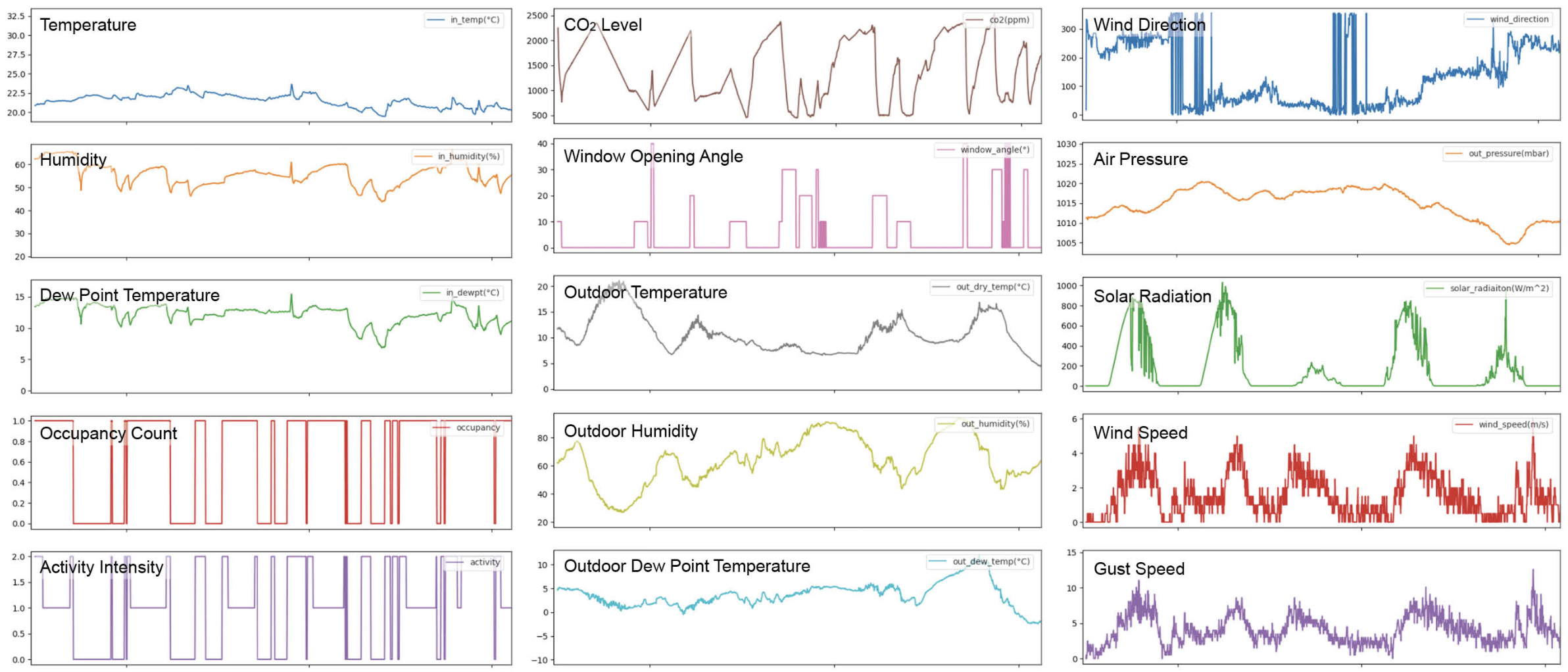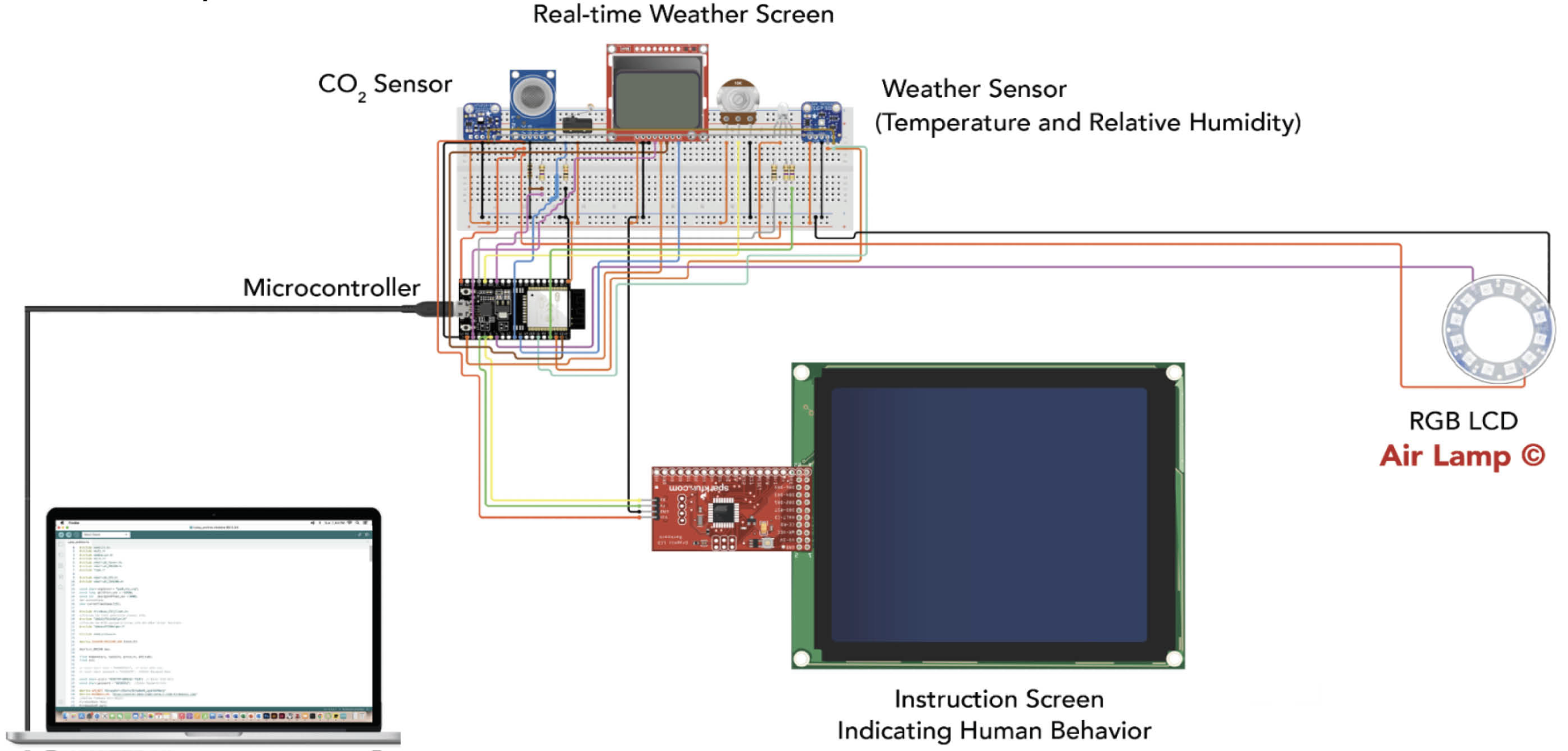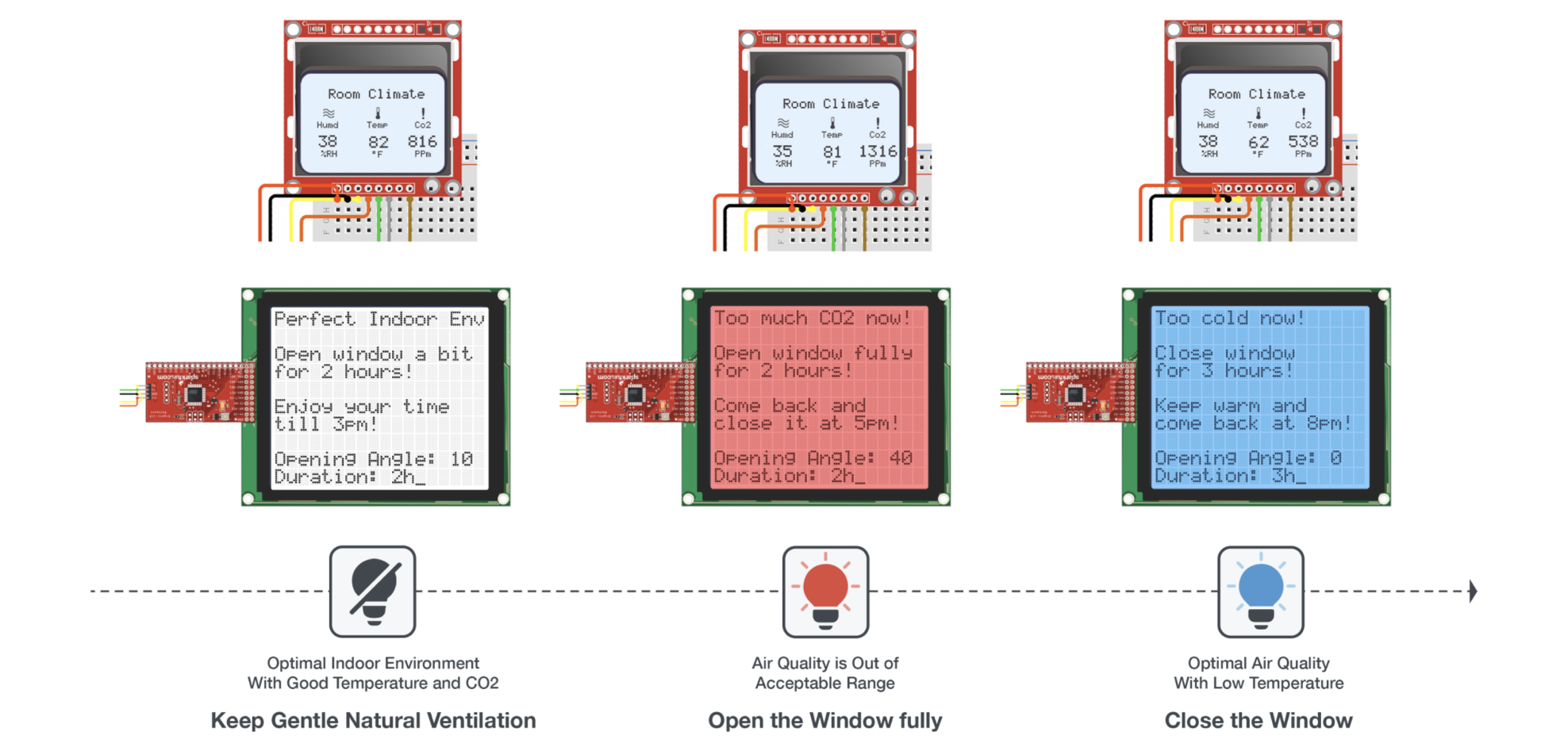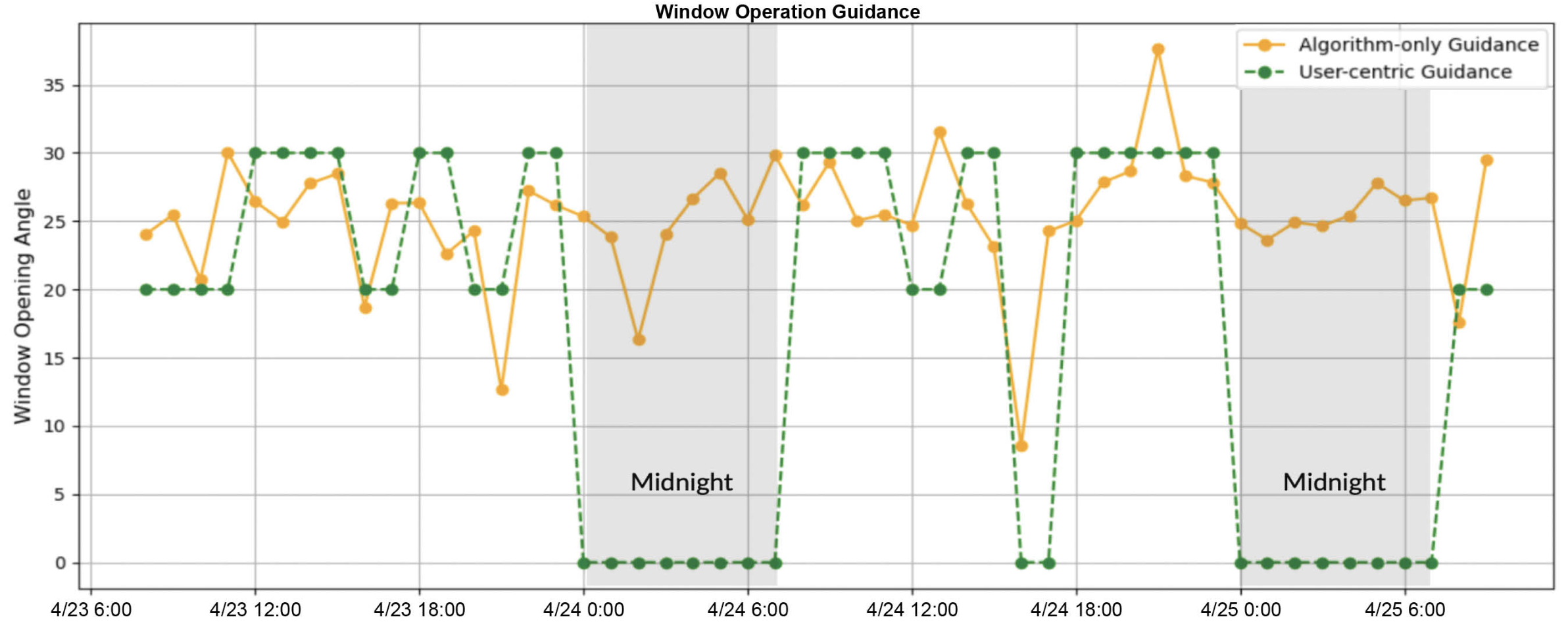Public Health Concern
Traditional ventilation strategies often fail to maintain both optimal CO2 levels and indoor thermal comfort. CO2 levels exceeding 1200 ppm can impair cognitive function, reduce productivity, and negatively impact mental health, posing pressing public health concerns. In the U.S., natural ventilation is inadequate in 88% of low-income housing. The real-data collection conducted in a dorm room indicated concerning indoor environmental conditions. CO2 levels consistently exceeded recommended thresholds. The data highlights the urgent need for effective ventilation solutions to improve indoor air quality and ensure a healthier environment for residents.


Air Exchange and Energy Use
Physics-based air volume exchange and energy consumption approach models the relationship between air flow dynamics and required heating energy within indoor environments. By integrating this model with thermal energy equations, the energy required to maintain or restore indoor comfort conditions during air exchanges is quantified.


Data-Driven Control
The machine learning model leverages real-time environmental conditions and occupant behavior predictions to optimize window operation based on user activities and needs. Unlike fully automated window systems, this solution focuses on providing actionable insights to occupants, empowering them to manage their indoor environment effectively.


Machine Learning Results
The machine learning control system demonstrated notable improvements in both indoor environmental quality and energy efficiency. Predictive controls resulted in a significant reduction in CO2 levels, reflecting the system's capability to enhance air quality through optimized ventilation strategies. While the system achieved slightly higher indoor temperatures, this difference was minimal due to the testing occurring during the shoulder season, when outdoor temperatures were moderate.









